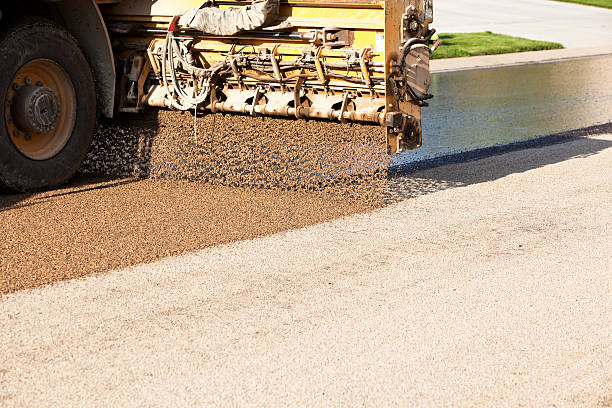Like most people, you probably don’t give much thought to the difference between crack filling and sealcoating. After all, they both seem to serve the same purpose – protecting your asphalt driveway from the elements. But there is a big difference between these two procedures, and understanding them can help you better decide which one is right for your driveway.
In this article, we’ll take a closer look at the differences between crack filling and sealcoating, and we’ll help you decide which one is best for your needs.
What is a crack filling?
Crack filling is a process whereby cracks in the pavement are filled with a crack filler to prevent water and other debris from entering the crack and causing further damage. The crack filler used for crack filling can be either asphalt or concrete. Asphalt is generally considered the more effective option, as it bonds well with the surrounding pavement and is less likely to crack under stress.
However, concrete is also an effective option, particularly for larger cracks. To fill a crack effectively, cleaning out the crack first and removing any loose debris is important. Once the crack has been cleaned, the filler material can be applied and smoothed. Crack filling is an important part of keeping pavement in good condition and preventing further damage.
When to consider crack filling
Before sealcoating
If you’re planning on sealcoating your driveway, it’s a good idea to fill any cracks first. This will help create a smooth, even surface that will be easier to sealcoat. Sealcoat can often highlight any imperfections in the pavement, so filling cracks beforehand can help create a better-finished product.
When cracks are small
Small cracks can often be filled without much trouble. However, these small cracks can quickly turn into larger ones if left unaddressed. Filling small cracks as soon as they appear can help prevent this from happening and keep your driveway looking its best.
When cracks are large
Depending on your preference, large cracks can be filled with asphalt or concrete. Large cracks should always be filled, as they can cause significant damage to your pavement if left unaddressed. It is important to clean out the crack before filling it, and you may need to use a brush or other tool to smooth out the filler material once it has been applied.
When cracks are numerous
If your driveway has numerous small cracks, you may want to consider having them all filled at once. This can save you time and money in the long run, as you won’t have to worry about constantly addressing new cracks as they appear. Additionally, filling multiple cracks at once can help to create a more even appearance.
What is asphalt sealcoating?
The experts from CSG Sealcoating, Jacksonville, say that the sealcoat material is usually a petroleum-based product applied with a brush or sprayer. Sealcoating can extend the life of an asphalt pavement by protecting it from the sun’s ultraviolet rays, traffic wear, and chemicals. It also helps to prevent water and ice from penetrating the surface, leading to pavement deterioration. Sealcoating is typically performed every two to three years, depending on the condition of the pavement and the amount of traffic it receives.
When to consider asphalt sealcoating
You want to protect your pavement from the elements
Asphalt sealcoating can also be a good idea if you want to protect your pavement from the sun’s ultraviolet rays, traffic wear, and chemicals. By providing a protective barrier, sealcoating can help extend your pavement’s life and keep it looking good for many years to come.
You want an easy way to maintain your pavement
Sealcoating is also a good option if you are looking for an easy way to maintain your pavement. Unlike a crack filling, which can be a bit of a hassle, sealcoating can be easily performed every few years with minimal effort.
You want to improve the appearance of your pavement
In addition to protecting your pavement, asphalt sealcoating can also help to improve its appearance. Sealcoating can give worn and faded pavements a fresh, new look. It can also help to hide small cracks and imperfections.
You want to increase the value of your property
Asphalt pavements are a significant investment, and it is important to protect that investment. By sealcoating your pavement, you can help to increase its value and extend its lifespan. This can greatly add value to your property and make it more appealing to potential buyers.
Which one should you choose?
Now that we’ve looked at the difference between crack filling and sealcoating, you might be wondering which one is right for your needs. The answer will depend on several factors, including the pavement condition and the type of damage that has occurred. If you have just a few cracks, crack filling may be the best option. However, sealcoating might be a better choice if you have numerous small or larger cracks. If you’re unsure which option is best for your needs, we recommend speaking to a professional contractor who can assess the condition of your pavement and provide guidance on the best course of action.











